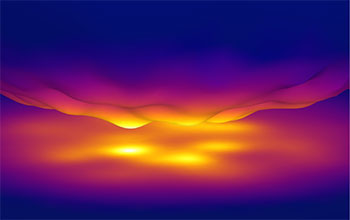Multimedia Gallery
Heat transfer at the nanoscale
The view inside the ultra-high vacuum scanning thermal microscope that was used to measure temperature fluxes at the nanoscale.
More about this image
When heat travels between two objects that are not touching, it flows differently at the smallest scales--distances on the order of the diameter of DNA, or 1/50,000 of a human hair. Researchers have been aware of this for decades, however, they haven't understood the process.
Now, in a unique, ultra-low vibration lab at the University of Michigan (U-M), engineers have measured how heat radiates from one surface to another in a vacuum at distances down to 2 nanometers.
"We've shown for the first time, the dramatic enhancements of radiative heat fluxes in the extreme near-field," said Pramod Reddy, an associate professor of mechanical engineering and materials science and engineering at U-M. "Our experiments and calculations imply that heat flows several orders of magnitude faster in these ultrasmall gaps."
The researchers say the findings have applications across nanotechnology. They could advance next-generation information storage, such as heat-assisted magnetic recording, and they could push forward devices that more directly convert heat into electricity, including heat generated in cars and spacecraft that is now being wasted.
The research was funded in part by the National Science Foundation (grant CBET 12-35691).
To learn more about this research, see the NSF News From the Field story Heat radiates 10,000 times faster at the nanoscale. (Date image taken: June 2015; date originally posted to NSF Multimedia Gallery: March 7, 2016)
Credit: Pramod Reddy, University of Michigan, Ann Arbor
See other images like this on your iPhone or iPad download NSF Science Zone on the Apple App Store.
Images and other media in the National Science Foundation Multimedia Gallery are available for use in print and electronic material by NSF employees, members of the media, university staff, teachers and the general public. All media in the gallery are intended for personal, educational and nonprofit/non-commercial use only.
Images credited to the National Science Foundation, a federal agency, are in the public domain. The images were created by employees of the United States Government as part of their official duties or prepared by contractors as "works for hire" for NSF. You may freely use NSF-credited images and, at your discretion, credit NSF with a "Courtesy: National Science Foundation" notation.
Additional information about general usage can be found in Conditions.
Also Available:
Download the high-resolution JPG version of the image. (829.3 KB)
Use your mouse to right-click (Mac users may need to Ctrl-click) the link above and choose the option that will save the file or target to your computer.



